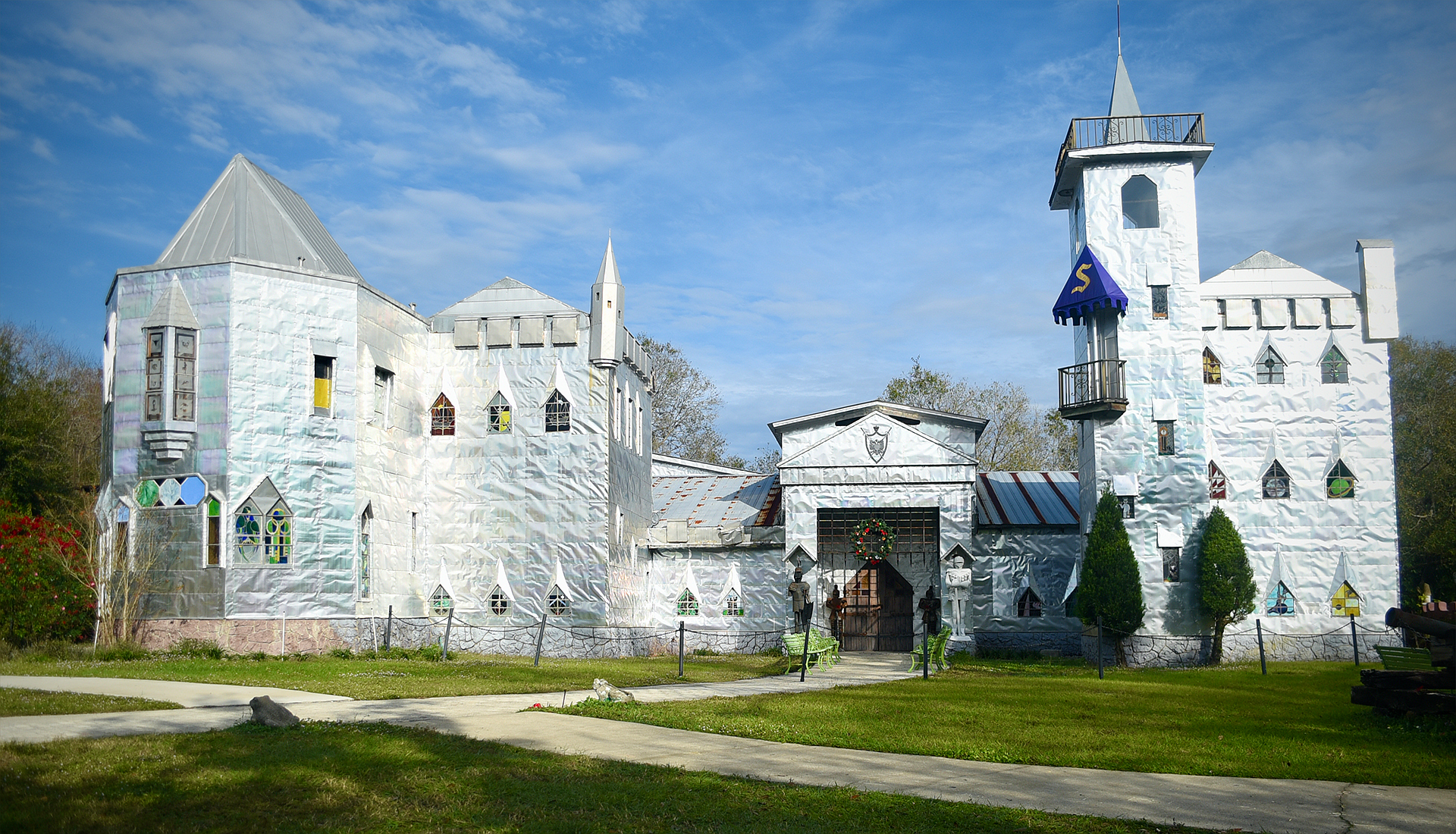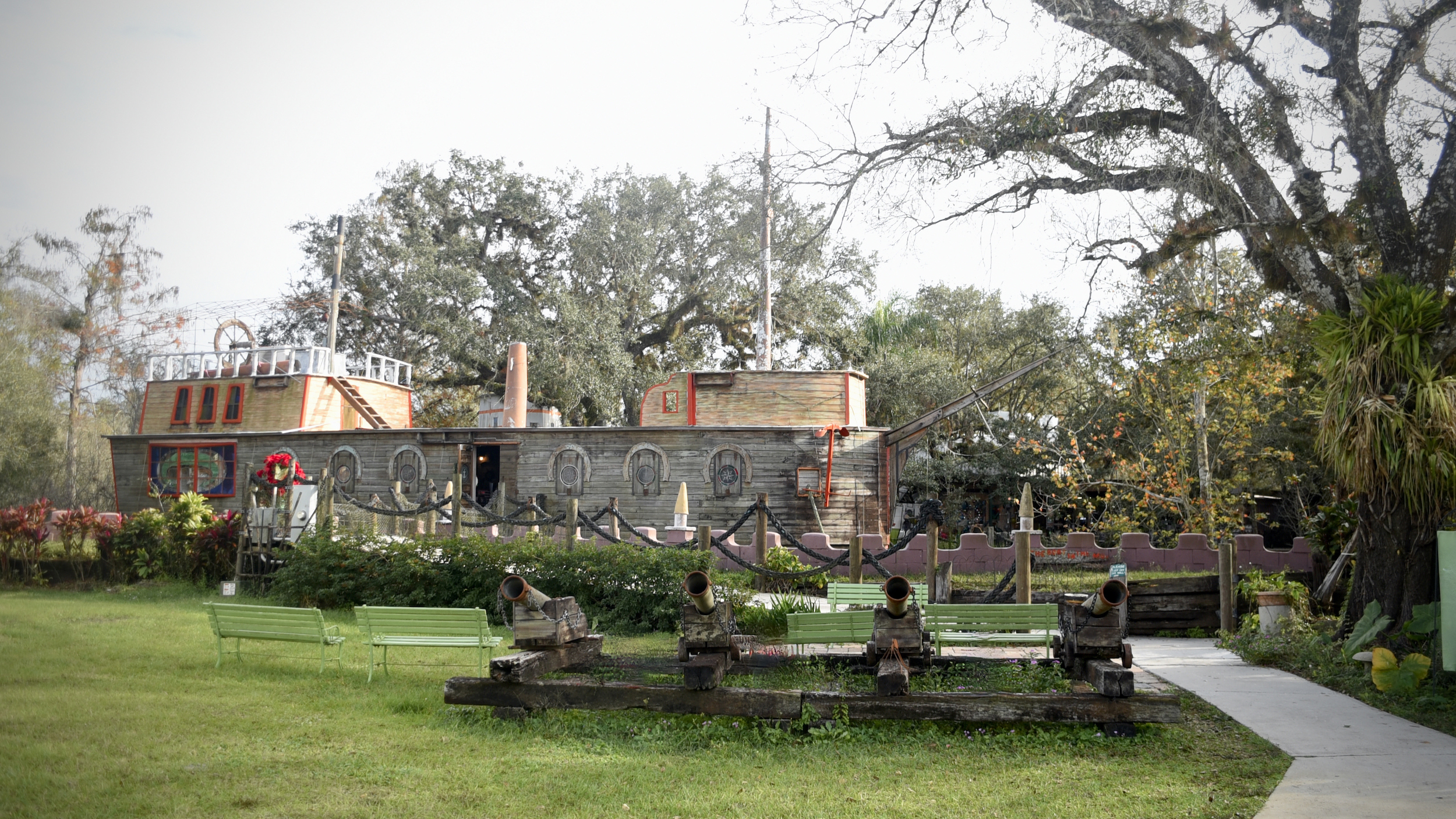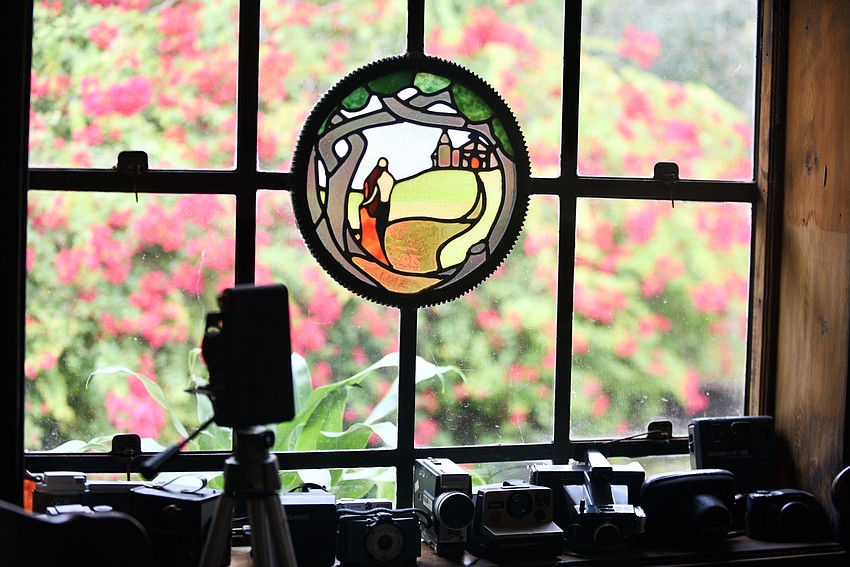- May 7, 2025
-
-
Loading

Loading

In the early 1970s, a short, skinny fellow from New York started building a castle on a 40-acre tract of land in rural Hardee County. Some of the locals — most of them country folk — were suspicious, disapproving, maybe even a little hostile. The man had a beard, for goodness’ sake. But one thing was certain: Everyone was curious.
“The townspeople just thought, ‘What’s this crazy New York Jew doing out there, building a castle?'” says Alane Solomon, talking about her father, Howard Solomon, who died in 2016. She owns and runs what has long been known as Solomon’s Castle, a quirky roadside attraction way off the beaten path, 20 miles east of Myakka City in the town of Ona. Sitting at a table in a landlocked wooden boat Howard Solomon built to serve as a restaurant for visitors, Alane, 62, is reminiscing about her father's early days in Hardee County.
He was a charismatic man, she explains, quick with a quip or pun, ready to engage with anyone. So, when a local Realtor invited him to speak at a Rotary Club meeting in Wauchula, the county seat, Solomon readily accepted. He won over the roomful of muckety-mucks and word quickly got out that Howard Solomon was, to use Alane’s words, “fairly normal.” Still, the provincial community had a delightful oddball in its midst.
During the Rotary Club meeting, members asked Solomon when they could come by for a look-see. He suggested the last Sunday of the month. Weeks went by and he forgot about his invitation. The locals didn’t. One Sunday morning, a few cars pulled up. Then a few more. “I would say there were about 40 people in all,” Alane recalls. “Dad says, ‘Well, we gotta give ‘em a tour,’ so we pushed breakfast aside. Dad took one group and I took another.”

Alane was 11 years old at the time. Subsequently, curious people showed up on any given Sunday, then Saturdays, then weekdays. Solomon always gave them a tour, and didn’t charge anyone, although many visitors offered donations. After years of showing folks around, Solomon realized it was disrupting his real work: making art. He asked his daughter to take over the tours. “Dad said, ‘anything you make above the electric bill you can have,’” Alane recalls. “I think we charged a dollar-fifty. I did that for a while and then turned it into a business.”
By this time, the early ’80s, Solomon had covered the castle with discarded printing plates that he bought from the Wauchula Herald-Advocate for a quarter a piece. They gave the building its chrome-like exterior, accented by 90 stained-glass windows that Solomon made. By then, a steady flow of people was turning up to see the shiny castle in the woods.
The gleaming structure — 65 feet high, three stories, 12,000 square feet inside — is the attraction’s eye-catcher and biggest draw. But there’s more. While exploring the grounds on a blustery day in mid-December, I encountered a menagerie of random amusements: a facade of The Alamo flanked by a cannon; a barn-turned-museum that houses Solomon’s vast collection of antique cars dating back to 1915; a rusted-out, ’50s-era truck sitting by its lonesome on a lawn (elsewhere it’s scrap; here it’s art).
And then there’s the smaller works, some 300 of them, arrayed throughout the complex but concentrated on the first floor of the castle. They represent Solomon’s wildly eclectic interests. They are made all or in part from found objects — junk, if you like — such as oil drums, bicycle chains, beer cans, coat hangers, musical instruments, rebar, blue jeans he stole from his daughter’s closet. And wood, lots of wood.
During my visit, a folksy tour guide who goes by “Uncle Jimmy” explains that, from the outset, Solomon did not need to go digging for raw materials: “Hardee County didn’t have a landfill until 1985. Back in those days, if something broke you just drug it into your back pasture. But when word got around that Howard would take their junk, people started showing up and chucking it over his gate.”
Solomon used this gifted treasure to make art, mostly sculptures — many of them very large — but also montages, stained-glass pieces, papier-mâché and more. They include whimsical representations of planes, trains and automobiles; suits of armor; marionettes; jazz musicians; all kinds of animals, including a 6-foot-high elephant made from sections of oil drum (with manatee ribs for tusks); and even an image of Heisenberg, Walter White’s alter ego in “Breaking Bad.” The highly professional work is fun and sometimes outright funny.
Solomon was certainly prolific. After my two tours, I was left wondering: How did one guy make all this? Alane says that her father did not work from dawn to dusk, as one might expect. He managed his time well and had the rare talent of envisioning things three-dimensionally in his head, so he didn’t need to draw or map out his creations. An idea would come, he’d grab some materials and tools and make it.
During and after my visit, another question stuck with me: Why, back then, a castle? Alane explains that after purchasing the land, Solomon soon discovered it was prone to flooding. “He realized he couldn’t build out, so he had to build up,” she says. “Then the artist part of him kicked in, and he saw a tower here, a tower there, and before you know it — a castle.”
While Solomon and the occasional work crew built the structure, Alane, who lived with her paternal grandparents in St. Petersburg, visited on weekends, staying in a double-wide trailer with her father. As a pre-teen, she moved to the property and eventually into the castle, with a bedroom on the third floor of the south tower.

For Alane, living in a budding wonderland amid the wilds of Florida was a love/hate affair. “I mean, I was living in a castle,” she says in a what’s-not-to-like tone. “Did it have a canopy bed and all the fairy tale stuff? No. But I was with my father.”
Still, there were hardships for a teenage girl. During her first couple of years, the property had no phone service. TV reception was spotty. Living so remotely, Alane had few friends, and just getting to and from school by bus took hours, she says. But there came a silver lining. She met her boyfriend, Dean Murphy, who many years later became her husband. They’ve been married 26 years and run Solomon’s Castle together. The couple lives on the grounds in a big brown structure called the Chocolate House.
Howard Solomon grew up in Rochester, N.Y., among a clan of tradesmen. He quit high school to focus on working with his hands. He moved with his first wife, Alane’s mother, to St. Petersburg, where he set up a business making cabinets. The marriage ended in divorce after six years.
One day a woman came into his shop wanting a stereo cabinet. The craftsman and the customer hit it off. Gwen, who was moderately wealthy and almost 20 years older than Solomon, uttered a simple phrase that altered his life. “You’re not a cabinet maker, you’re an artist,” Alane recounts.
Solomon and Gwen married and, soon after, packed up and moved to Freeport, Bahamas, seeking adventure and opportunity. Solomon continued to make cabinets and expanded into designing sets for nightclubs and the like, as well as making his own art. The couple stayed in the Bahamas for seven years. Alane and her brother, who were living with their mother in upstate New York, visited once. But once was all it took. Solomon jumped at the opportunity to take in his kids full-time and they moved to the Bahamas.
Solomon returned to Florida with an itch to own a sizable chunk of land. He earmarked the rural areas east of Sarasota/Bradenton. With the help of a Realtor, Solomon hunted for property. It took seven months until they came upon the tract in Hardee County. It had everything he was looking for. Although deep in the woods, the acres were just close enough to growing metro areas, which gave birth to his catchphrase, still in use today, “We’re not in the middle of nowhere; we’re in the middle of everywhere.” The property was so ideal that Solomon was curious if it had just come on the market? No, the Realtor told him, and apologized for not showing it to him sooner. “Well, it turns out he didn’t show it to him because it floats, and I guess he was waiting for it to dry up,” Alane says.
Flood-prone or not, Solomon now owned it. Gwen died suddenly of a heart attack not long after the castle build began. Solomon considered leaving the property but ultimately pressed on. He moved into the castle and, over time, added more buildings, and steadily grew his kingdom to its current 93 acres. At one point, he realized an opportunity. “Visitors would say, ‘We love this place, but now we have to find someplace to eat,’” Alane recalls. So, Solomon built The Boat in the Moat, a restaurant that has provided important cash flow.

The boat, which usually sits in a shallow stream, never floats, but it has been waterlogged. As has the castle, which has flooded 15 times, and survived several major storms. The most devastating was Hurricane Ian in 2022, which poured in more than six feet of water. Smartly, the bottom sections of the walls are made of Styrofoam, which is easily replaced. Getting Solomon’s Castle up and running again after Ian was a Herculean task. Friends, family and the small staff worked long hours seven days a week, repairing and cleaning up. The artwork suffered very little damage. It took less than two months to reopen the gates, Alane says, adding, “I still can’t believe what we accomplished.”
Howard Solomon had heart trouble for much of his adult life but remained productive until he died at age 81. In his later years, he spent a lot of time with family, worked the cash register at an alcove in the castle, mingled with customers and showered them with jokes. He continued to make art until the end.
A full, colorful life, all told. With a devoted daughter. “My Dad was my best friend,” Alane says.
Solomon never achieved acclaim as a front-rank fine artist. His work is not found in museums or in the homes of rich folk. “I feel that he was a hidden treasure,” Alane says. “He didn’t do the New York or Los Angeles circuit. He was more real than that. He wanted to make a living selling his artwork, and he did that, and he could’ve continued that. But one day he said, ‘Well, what do I need to sell it for? People are paying me to come and see it. I’m gonna keep it.’”
His work ended up in a museum after all.